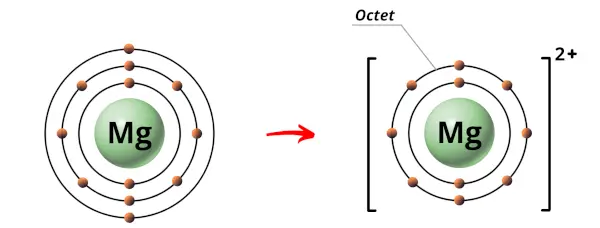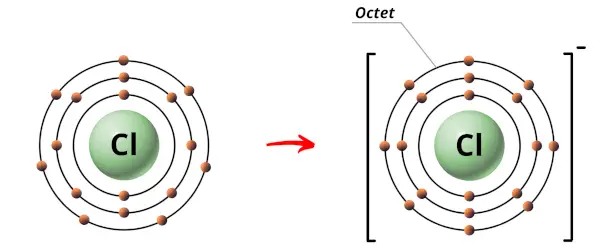
MgCl2 (Magnesium chloride) is an ionic compound because when the metal combines with nonmetal, it usually forms an ionic compound. Here, Mg is a metal and Cl is a nonmetal. So when they combine, it forms an ionic compound.
Well, now you have got to know that MgCl2 is an ionic compound, but let me explain the in-depth reason why MgCl2 is an ionic compound.
If you are a visual learner like me, then here is a short one minute video for you.
Why is MgCl2 an ionic compound?
As mentioned above, you can simply remember that when the metal combines with nonmetal, the bond between them is an ionic bond.
Here in MgCl2, the Mg atom is a metal and the Cl atom is a nonmetal.

Hence the bond between them is an ionic bond.
How does the ionic bond form between Mg and Cl?
In MgCl2, there are two atoms;
Mg and Cl.
About Magnesium (Mg):
Magnesium atom have 12 electrons.
The electrons arrangement in Magnesium (Mg) is 2, 8, 2.
So the outermost orbit of Magnesium atom has 2 electrons.
Now Magnesium is a metal and the metals are highly electropositive (that means they have the tendency to lose electrons and become positive ions.)

Hence during the chemical reaction, the Magnesium atom will lose 2 electrons to form a stable octet.
About Chlorine (Cl):
Chlorine atom have 17 electrons.
The electrons arrangement in Chlorine (Cl) is 2, 8, 7.
So the outermost orbit of Chlorine atom has 7 electrons.
Now Chlorine is a nonmetal and the nonmetals are highly electronegative (that means they have the tendency to gain electrons and become negative ions.)

Hence during the chemical reaction, the Chlorine atom will gain 1 electron to form a stable octet.
What happens when Mg and Cl combine?
When Mg and Cl combine with each other, the electron transfer takes place from Magnesium atom to Chlorine atom (i.e from Mg to Cl).
In other words, the Magnesium atom (Mg) loses 2 electrons and the Chlorine atoms (Cl) gains 1-1 electrons.
Due to this, Magnesium becomes a positive ion (Mg2+) and Chlorine becomes a negative ion (Cl–).
Now because of the positive charge of Magnesium ion and negative charge of Chlorine ion, the electrostatic force of attraction is produced between them.

This electrostatic force between Magnesium ion and Chlorine ions results in an ionic bond between them.
Hence, MgCl2 is an ionic compound.
I hope you have understood the reason why MgCl2 is an ionic compound.
Check out other compounds to see whether they are ionic or covalent;
Is SO2 (Sulfur dioxide) Ionic or Covalent?
Is MgO (Magnesium oxide) Ionic or Covalent?
Is CCl4 (Carbon tetrachloride) Ionic or Covalent?
Is CaO Ionic or Covalent?
Is KCl (Potassium chloride) Ionic or Covalent?
Jay is an educator and has helped more than 100,000 students in their studies by providing simple and easy explanations on different science-related topics. With a desire to make learning accessible for everyone, he founded Knords Learning, an online learning platform that provides students with easily understandable explanations.
Read more about our Editorial process.

